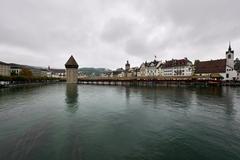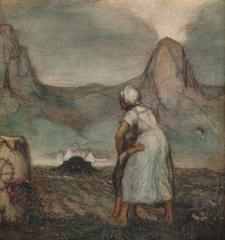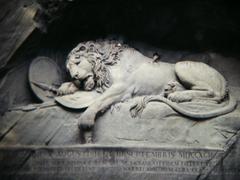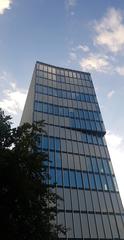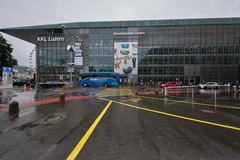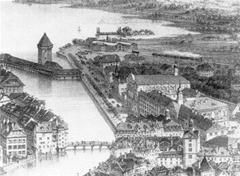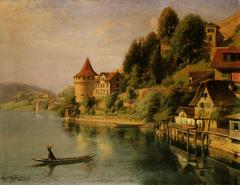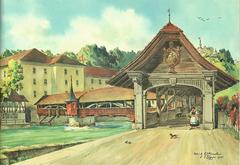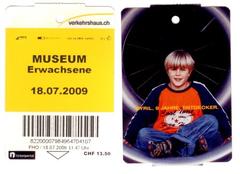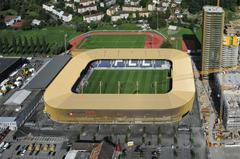Richard Wagner Museum Lucerne: Visiting Hours, Tickets, and Historical Significance
Date: 04/07/2025
Introduction
Set along the tranquil shores of Lake Lucerne in the charming Tribschen district, the Richard Wagner Museum stands as one of Switzerland’s most significant cultural landmarks. Housed in the historic Tribschen Manor, the museum not only preserves the legacy of Richard Wagner, one of the 19th century’s most influential composers, but also serves as a vibrant center for musical heritage, education, and dialogue. Visitors are invited to explore original manuscripts, personal artifacts, and the very rooms where Wagner composed some of his seminal works, all within a setting of breathtaking natural beauty.
Historical Background
The Tribschen Manor: Origins and Transformation
The Tribschen Manor, now home to the Richard Wagner Museum, traces its origins to the 15th century. Initially built and inhabited by the “Herren zu Tripschen” noble family, the manor underwent a major architectural transformation around 1800, adopting a distinctive axisymmetrical façade (Richard Wagner Museum – Country Manor). Its 30,000 m² park offers panoramic views of Lake Lucerne and the surrounding Alps, providing an inspiring environment that drew Wagner to Lucerne in the late 1860s.
In the 18th century, the estate passed to the Am Rhyn family of Lucerne, who used it as a summer residence, setting the stage for Wagner’s arrival.
Wagner’s Lucerne Years: 1866–1872
Fleeing political turmoil and seeking creative refuge, Richard Wagner moved into Tribschen Manor in 1866, supported by King Ludwig II of Bavaria (Operas and Cycling – Richard Wagner Museum in Luzern). During his six years here, Wagner composed parts of “Der Ring des Nibelungen” and premiered the “Siegfried Idyll” as a birthday surprise for his wife Cosima. The manor also witnessed key personal events, including Wagner’s marriage to Cosima and the birth of their son, Siegfried (Richard Wagner Museum – Previous Exhibitions).
The estate became a gathering place for notable artists and intellectuals, fostering a vibrant cultural exchange that left a lasting mark on European music and thought.
From Private Residence to Public Museum
After Wagner’s departure in 1872, the manor continued as a holiday home before being acquired by the city of Lucerne in 1931. Two years later, it opened to the public as the Richard Wagner Museum, presenting an extensive collection of manuscripts, letters, personal belongings, and original furnishings (Richard Wagner Museum – Country Manor). Today, the museum’s dynamic programming and evolving exhibitions ensure that Wagner’s multifaceted legacy remains relevant and thoughtfully interpreted.
Visitor Information
Opening Hours
- April to October: Tuesday to Sunday, 10:00 AM – 5:00 PM
- November to March: Tuesday to Sunday, 11:00 AM – 4:00 PM
- Closed: Mondays and on certain public holidays
Always check the official website for seasonal adjustments and public holiday schedules.
Tickets and Admission
- Adults: CHF 12–15
- Reduced (students, seniors, AHV, guest pass): CHF 10
- Groups (10+): CHF 10 per person
- Students/Youth (10–16 years): CHF 5
- Children under 10: Free
Free entry is available for holders of the Swiss Museum Pass, Lucerne Museum Pass, Raiffeisenkarte, Swiss Travel Pass, and Kulturlegi. Tickets can be purchased online or at the entrance (Richard Wagner Museum official site).
Accessibility
The museum is wheelchair accessible, with ramps, elevators, and accessible toilets. Contact the museum in advance for specific assistance needs (Holidify).
Location and Getting There
- Address: Richard-Wagner-Weg 27, 6005 Lucerne, Switzerland
- Public Transport: Bus lines 6, 7, or 8 to Wartegg stop, then a short walk
- Parking: Available nearby (Bargain Travel Europe)
Facilities and Amenities
- Sommercafé: Open seasonally with panoramic lakeside views, offering drinks and light refreshments (richard-wagner-museum.ch)
- Museum Shop: Features books, recordings, and Wagner-related souvenirs
- Library: Specialized collection on Wagner and his circle
Audio Guide
Included with admission and available in English, German, French, Italian, and Spanish. Visitors are encouraged to bring headphones.
Exhibitions and Collections
Permanent Exhibition
The museum’s ground floor is dedicated to Wagner’s life and work during his Lucerne years (1866–1872). Highlights include:
- Wagner’s Erard Grand Piano (1858): Used to compose major works like “Die Meistersinger von Nürnberg,” “Siegfried,” and “Götterdämmerung.” Occasionally featured in concerts (luzern.com).
- Original Manuscripts and Personal Letters: Offering insight into Wagner’s creative process and personal relationships.
- Historic Musical Instruments: Including a regal (portable organ), reflecting musical innovation (lonelyplanet.com).
- Thematic Rooms: Explore Wagner’s collaborations, family life, and the cultural context of his time.
Temporary Exhibitions and Events
The museum regularly hosts special exhibitions that address Wagner’s influence on culture and confront controversial aspects of his legacy. The 2025 program includes “Wagner Taboo? Jewish Perspectives,” fostering critical dialogue (richard-wagner-museum.ch). Concerts, open-air cinema nights, and lectures enrich the cultural calendar.
Guided Tours and Educational Programs
Guided tours are available in multiple languages and can be booked in advance. The audio guide offers a self-paced exploration of the museum’s highlights. The museum also organizes educational workshops and events for visitors of all ages (richard-wagner-museum.ch).
Visitor Experience and Tips
- Check visiting hours and tickets in advance: Official website
- Bring headphones: For a seamless audio guide experience
- Photography: Allowed in gardens and select exhibition areas; observe signage for restrictions
- Combine your visit: Explore nearby Lucerne attractions like the Chapel Bridge, Old Town, Lion Monument, and Swiss Museum of Transport (lonelyplanet.com)
- Enjoy the gardens: Perfect for lakeside strolls and relaxation
- Attend special events: Concerts and film nights offer unique cultural moments
Frequently Asked Questions (FAQ)
Q: What are the museum’s opening hours?
A: Tuesday to Sunday, 11:00 AM – 5:00 PM (April–October); closed Mondays except July and August when open daily; closed winter (December–March).
Q: How much are tickets?
A: Adults CHF 12–15, reduced CHF 10, students/children CHF 5, free for children under 10 and certain pass holders.
Q: Is the museum accessible for visitors with disabilities?
A: Yes, wheelchair accessible with facilities for visitors with limited mobility.
Q: Are guided tours available?
A: Yes, in multiple languages by advance booking; an audio guide is also included.
Q: Can I take photographs inside?
A: Generally allowed in gardens and some exhibitions; check signage for restrictions.
Contact and Further Information
- Address: Richard-Wagner-Weg 27, 6005 Lucerne, Switzerland
- Phone: +41 41 360 23 70
- Email: [email protected]
- Website: https://www.richard-wagner-museum.ch/visit/information/
- Social Media: Facebook, Instagram
Conclusion
The Richard Wagner Museum in Lucerne is an essential destination for anyone interested in music, history, or Swiss culture. By preserving the composer’s residence and presenting a rich array of original artifacts, the museum provides a rare window into Wagner’s life and the creative environment that shaped his masterpieces. With accessible facilities, engaging exhibitions, and a stunning lakeside location, it makes for a memorable and inspiring visit. Plan ahead, check the latest information on the official website, and consider downloading the Audiala app for an enhanced audio guide experience.
For further exploration of Lucerne’s cultural landscape, combine your museum visit with nearby attractions and stay updated via the museum’s digital channels.
References
- Visiting the Richard Wagner Museum in Lucerne: Hours, Tickets & Rich History, 2025, Richard Wagner Museum Official Website (https://richard-wagner-museum.ch)
- Visiting the Richard Wagner Museum in Lucerne: Hours, Tickets, and Cultural Insights, 2025, MySwitzerland (https://www.myswitzerland.com/en-au/experiences/richard-wagner-museum/)
- Visiting the Richard Wagner Museum in Lucerne: Hours, Tickets, and Highlights, 2025, Lonely Planet (https://www.lonelyplanet.com/switzerland/central-switzerland-and-berner-oberland/lucerne/attractions/richard-wagner-museum/a/poi-sig/448475/360814)
- Richard Wagner Museum Visiting Hours, Tickets & Guide to Lucerne Historical Sites, 2025, Bargain Travel Europe (https://www.bargaintraveleurope.com/09/Switzerland_Wagner_Museum_Lucerne.htm)
- MySwitzerland – The Music Capital of Switzerland, 2025, Switzerland Tourism (https://www.myswitzerland.com/en-us/experiences/cities-culture/stories/the-music-capital-of-switzerland/)
